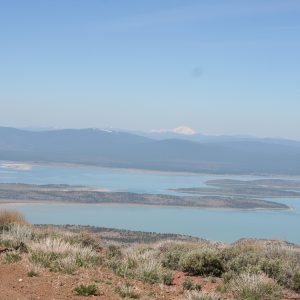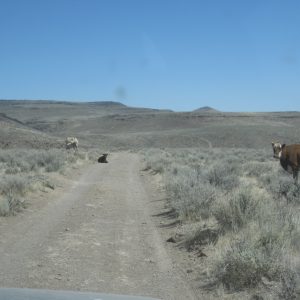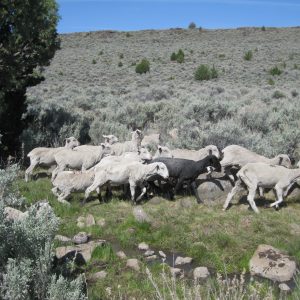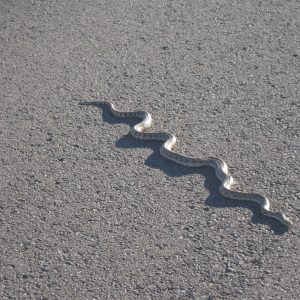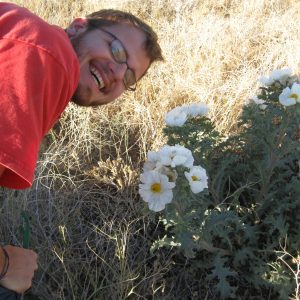Mid-June marked the beginning of field camping for our crew in Klamath Falls, enabling us to complete surveys at more distant sites. After a week in northern California continuing our assessment of endangered Modoc sucker populations (see Good Night, and Good Suckers or A sucker kind of night), we returned from the Chicago workshop to focus on a new project aimed at improving habitat conditions for threatened bull trout. The species generally prefers the calm water of stream pools, but years of timber removal have caused the amount of large, pool-forming woody debris to decline, potentially aiding more flexible non-native brown trout in competition for resources. As such, we have been collecting baseline data for an upcoming effort to add new logs to sections of the streams.
We accomplish this through mark-recapture and remote detection of PIT tags (similar to methods for adult suckers), but instead of nets, we use backpack-mounted electrofishing units. Current traveling through the water between the anode (ring at the end of a wand) and the cathode (wire that trails behind) briefly stuns any fish within a few feet, just enough time to allow retrieval by dip net.
Processing is performed as a three-bucket system, with each fish receiving a small dose of anesthetic prior to measurement, tag injection and clipping of their adipose fin (a means of quantifying tag loss, hopefully without significantly impacting swimming ability). On later visits, a stream section can be shocked again or a mobile antenna device can be used to scan for the tags without capture (an easier and less invasive technique, but with a lower detection rate based on tests where we temporarily block-netted the top and bottom of a section).

Electrofishing backpack unit, with power button conveniently located too far back for the wearer to reach
I’m pleased to report no serious incidents despite playing with electricity in not-quite-waterproof waders, thanks to a safety-conscious crew. The shocking units also contain a number of fail-safes, including sensors that will cut off power in the event of water contact or even a low tilt, adding some peace of mind. Actually, the biggest danger has been running into branches and slipping on rocks in the stream channels, which certainly boost one’s appreciation for unobstructed walking. Still, it keeps us reasonably cool and out of the sun, so I can’t complain too much considering the unrelenting heat of some of the locations other interns have to deal with. In fact, at such high elevation, we actually woke up to snow covering our campsite one morning in late June!
In between bull trout surveys, we’ve also completed some wetland vegetation mapping in the delta of the major tributary to Upper Klamath Lake, which was re-flooded within the last few years after having been drained and used as farmland for decades. We hope to quantify the amount of edge habitat suitable for juvenile suckers, and identify how that availability will change at different lake levels. This has involved my introduction to Trimble GPS units, which although somewhat finicky and counterintuitive, produce amazing results coming after years of accepting a 10-meter error as a given. It also gave me a chance to check out the beginnings of the annual “algal” bloom (actually AFA cyanobacteria), which grows unchecked due to its ability to fix nitrogen and the volcanic region’s abundant supply of phosphorus. When it crashes, its decomposition reduces dissolved oxygen in the lake, potentially contributing to juvenile mortality in shortnose and Lost River suckers. On top of that, the blooms are often highly toxic. Needless to say, Klamath Lake is not known for its swimming.
Beyond these, I’ve made use of our limited time out of the field chugging through more sucker specimen photos, compiling spatial data with ArcGIS (it’s surprising how much you forget, being away from it for a year), and preparing for upcoming grass and sucker surveys. Outside of work, I’ve been hiking most weekends, including the snow-capped Mt. McLoughlin just west of the lake and the spectacular, obsidian-laden Glass Mountain on the edge of the Medicine Lake Volcano in northern CA. Keeping busy.
I enjoyed meeting everyone at the workshop last month – hope everybody’s field seasons continue to go well!
– Tommy Esson (USFWS, Klamath Falls, OR)

















